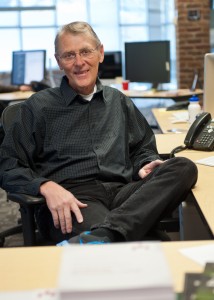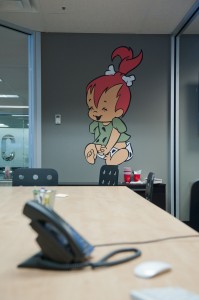Professors at Brigham Young University have generated more than $1 billion in revenue and company valuation in the last three years, both in university and personal earnings. Some of the revenue-generating products, however, have been years in the making.
BYU professors generate hundreds of millions of dollars in revenue for the various startups and patents that have taken off, giving BYU students a glimpse of what might be in their future one day.
Below is a list of companies that professors have started, along with a patent that contributed to the valuation of over $1 billion.
Qualtrics
Scott Smith gets to live his dream every day. A former marketing professor at BYU, Smith is the co-founder of Qualtrics. Forbes reported that the survey software company turned down a $500 million offer to buy earlier this year. The valuation of the company, Smith said, should hit $1 billion in the “fairly short term.”

Smith first came up with the idea to develop a survey engine in 1997 to help him with his own research work.
“If you’ve ever done a paper-and-pencil survey, it takes you months to do something like that, and the first survey that we collected online, within 48 hours, our data was in the computer,” he said. “All coded in there. All of the sudden the light clicks on and you’re like, this is something wonderful. It’s quick, it’s easy, it’s more accurate.”
Smith wanted to share it with the world and, with the help and eventual leadership of his sons, started Qualtrics in 2002.
The company has grown rapidly and more than doubled its office space to 80,000 square feet in the past year. The company estimates that 70 percent of its employees are BYU graduates, Liz Tanner, communications director at Qualtrics said.
Corporate culture takes after other technology startups, with open spaces, catered lunches and the odd dog wandering around every now and then. Conference rooms are named after various cartoon characters, which also feature the characters themselves on the walls of the rooms. If you need a break, there are massage chairs readily available in the center of the office.

The company was recently ranked by Forbes as one of America’s Top 25 Most Promising Companies. Ryan Smith, the company’s CEO and Scott Smith’s son, was also listed as one of America’s Most Promising CEOs under 35.
Pfizer
Daniel L. Simmons, a chemistry professor at BYU, was a major contributor in the development of a drug called Cerebrex, which treats arthritis and inflammation. In May, the Associated Press reported that BYU and Pfizer Inc. agreed to an out-of-court settlement, which awarded Simmons and the university $450 million. The lawsuit originated over a dispute between Simmons and Monsanto, which was acquired by Pfizer.
The university originally fought for a 15 percent royalty on the sales of the drug, which would have amounted to an estimated $9.7 billion.
As part of the terms of the settlement, the university plans to create and endow a chair to recognize the work Simmons did to contribute to the advancement of human health, the Associated Press reported. Simmons is now working on developing a new version of the drug.
Millenniata
When professor Barry Lunt was looking at family photos one day, he realized just how hard it would be to store them over a long period of time, whether physically or digitally. Because digital hard drives only last for a few years, Lunt wanted to find a solution to have his family memories treasured for years to come.
Lunt developed the M-DISC, a product that stores data for up to 1,000 years.
The company was born after a year and a half of research. Started in 2007, Lunt and his partners were able to get investors readily and had over 200 people invest in the company. Two years later, the company started production of the disc. While the company started off slow, the business has since taken off. A presentation at a Japan conference in 2010 led to inquiries from many companies where Lunt met an engineer from LG, an electronics and telecommunications equipment giant.
“He immediately sensed the significance of what we were doing, and he went back to his company and talked with them,” Lunt said. “Since then, LG has remained a strong partner and has been doing funding right now of the Blu-ray version of our disc.”
A test performed by the U.S. Naval Air Warfare Center Weapons Division in China Lake, Calif., tested five different archival-quality DVD discs to check on data longevity and reliability, according to a press release issued by the company. The test found that the M-DISC was the only storage disc that did not lose data or degrade. The other discs failed, the release said.
Millenniata signed a contract last year with Ritek, a company that produces discs for companies such as Philips, Memorex and Verbatim.
T-Splines
Tom Sederberg, a BYU computer science professor, wrote up a program for computer design software allowing engineers to test the viability of the design at the same time. The company has received various awards and funding opportunities over the last 30 years, most notably a $500,000 grant from the National Science Foundation in 2006. The value of his work became strikingly evident in 2011 when T-Splines Technologies was acquired by Autodesk for a total of $23 million, according a filing with the SEC.
BYU Technology Transfer Office
Behind the statue of Massasoit sits the entrance to a little-known office on the west side of the Harold B. Lee Library.
BYU’s Technology Transfer Office at BYU helps “faculty, students and staff commercialize any technology or product developed through their association with the university,” according to its website. It also “provides expertise in business relationships, negotiations, protection of intellectual property, marketing, license agreements, contracts and entrepreneurship.”
The Chemistry and Engineering Departments have been the largest royalty producers over the past few years, said Mike Alder, director of the Technology Transfer Office. While the office has previously helped students, it is a little more hesitant to do so because investors don’t have the confidence the student has experience to be successful.
Since professors work for the university, the university owns the work of the professor, but the school shares 45 percent of any incoming revenue, both royalties and other upfront fees. When a faculty member decides to be involved in a startup, the faculty member is removed from the share of the royalties and up-front fees because the professor receives his or her share from equity in the company. The money the university receives is shared between the college and university.
For the professors, the money isn’t the dream. Rather, the dream is to help create a better world, to develop technology and products that allow for a more efficient society.
“This is really a dream for me, to do the best research in the world, to help my colleagues throughout the world, and help students,” Smith said. “That was the dream from the beginning. We are doing everything we can to make more and more sophisticated products. It is very good now, but it is only going to get better.”




